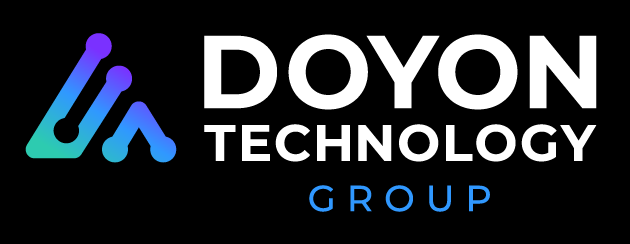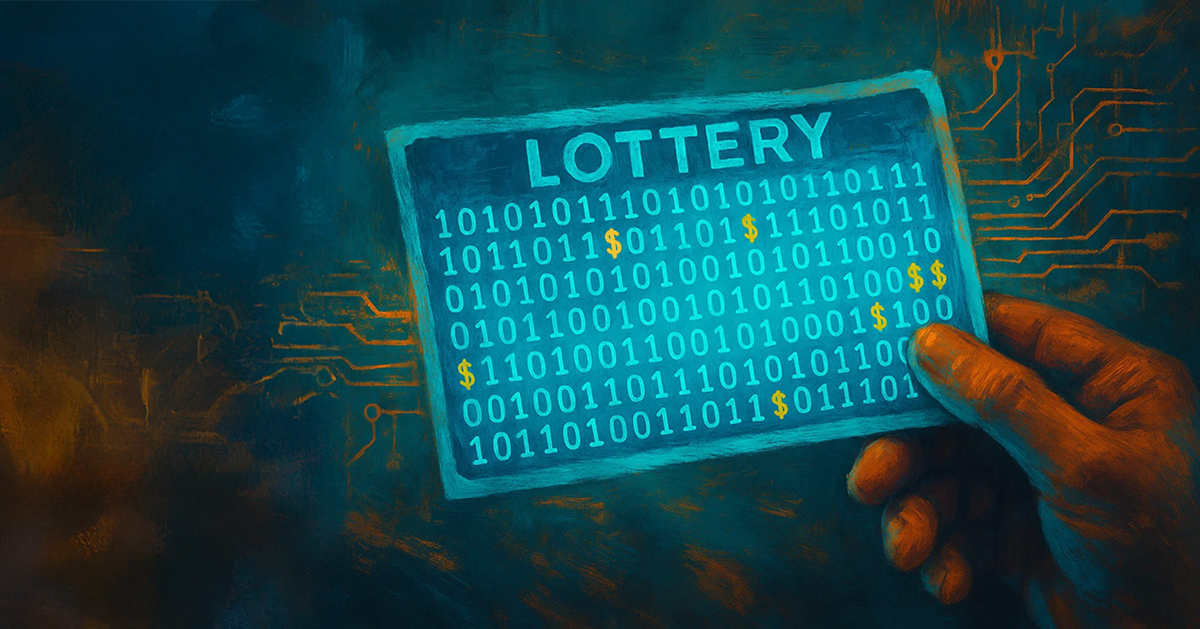A story of more tickets, smaller lottery
Fifteen years ago, I had perfect clarity. My team and I were going to change how people listened to radio. Six months of grinding. Twenty-five thousand dollars invested. Launch week: more than 100,000 downloads. We blasted T.I.’s “Live Your Life,” stacking pizza boxes like we knew we were about to be stacking cash.
Three months later, it was over. Zero stickiness. Users opened the app once or twice and vanished. Day 7 retention was in the single digits.
We had entered the wrong lottery. One expensive ticket to a massive drawing with no way to improve our odds. One shot. One outcome. No second chances.
I learned later what a couple of college dropouts figured out by accident.
Picture this: it was 1976 at the Homebrew Computer Club in Menlo Park. A couple of guys carried in a circuit board they’d built in a garage. Paul Terrell, a small retailer with a knack for following his gut, studied it. He liked the board. He didn’t like the plan to sell kits.
“I don’t want kits,” he said. “Fifty fully assembled computers in 30 days. Five hundred dollars each.”
The guys said yes, took the $25,000 order, and started a company. They named their company Apple.
They did not build a computer. They changed the odds. Selling finished computers when others sold kits shrank the field and raised their chances (more tickets, smaller lottery). Right room. Right time. Right product. Right buyer.
The math of manufactured luck
Steve Jobs and Steve Wozniak did with Apple what I failed to do with my business. They maximized the variables.
Your success boils down to simple math:
Tickets × Focus × Signal = Expected Serendipity
- Tickets: Number of attempts you ship.
- Focus: How tightly you target your field.
- Signal: How fast and clearly you learn.
Multiply them. Don’t add them. Small gains compound. Double each variable, and you 8x the output.
AI makes luck affordable
Before AI, manipulating those variables was costly. Now it’s not. AI makes each variable an order of magnitude cheaper to move. Teams using AI for personalization consistently see revenue lifts of 5% to 15% and marketing ROI improvements of 10% to 30% when they target tightly and learn quickly.
AI automates the mundane, optimizes the complex, and personalizes the general. That mix turns more attempts into better attempts and shrinks the time from idea to feedback. When feedback arrives faster and clearer, you can redirect shots while they’re still in the air.
AI doesn’t make you luckier. It makes luck affordable.
A formula for results: Tickets, Focus, Signal
According to Forrester’s 2024 Total Economic Impact study, enterprises using Jasper, an AI-first marketing software, achieved 342% ROI, with teams reporting they run roughly 10x more content variations while cutting production time from weeks to days. One team tested 47 headlines in a single week. A traditional marketing timeline might look like three months and $50,000. With AI, it can be one week and under $500. That’s an average content velocity increase of 11x.
The motivation is in the numbers.
Richard Wiseman spent a decade studying people we call lucky. In “The Luck Factor,” his finding wasn’t fairy dust. Lucky people entered more contests with better odds. They created and noticed more opportunities.
That maps cleanly: more Tickets, tighter Focus, cleaner Signal. Luck rewards the team that runs more tests with better feedback loops.
A Series A founder changes her math
A founder I know was burning through her runway. Three months left. One pristine deck. One hundred investors. Three meetings. Zero term sheets.
She knew it was time to change the variables:
- Tickets: Built 20 AI-generated deck variants, each with a distinct angle.
- Focus: Cut the list to 40 investors who’d recently funded adjacent spaces.
- Signal: Recorded personalized videos showing how her product could help three companies in each investor’s portfolio. No generic pitch. Unmistakable relevance.
Her first reply arrived in twelve minutes. “You clearly did your homework. When can we talk?” Her hands were shaking when she read it.
| Approach | Tickets | Focus | Signal | Result |
| Old | 1 deck | 100 investors | Generic pitch | 0 terms |
| New | 20 variants | 40 targeted | Portfolio-specific videos | $3M raised |
The difference wasn’t genius. It was math. She spun the variables faster, in a tighter field, with sharper feedback loops.
Measure what multiplies
The previous example is a formula that can be repeated like a compass, but only if you measure the parts.
- Tickets: Attempts shipped per week. Count shipped, not started.
- Focus: Compression factor. New field size divided by old field size. Smaller is better. Example: 500 prospects → 80 prospects = 0.16. Aim for under 0.20.
- Signal: Time to signal and signal clarity. Track time-to-first-response and response rate. Add cost per insight so cheap signals don’t mask noise. If cost per insight rises while win-rate stalls, your signal is noise.
Set weekly targets. Review Friday. Adjust Monday.
Serendipity scales when tickets, focus, and signal move together. If your signal is late, your tickets are just decoration.
Where this formula breaks
Healthcare that keeps people alive cannot run twenty live experiments. Banking that moves trillions cannot wing it. Nuclear plants don’t A/B test reactor cooling.
When the cost of being wrong is catastrophic, or when a test triggers regulatory review, you’re not compressing a lottery. You’re operating a system. You need one correct answer, not twenty fast trials.
But most of us aren’t running reactors. We’re shipping software, launching products, creating content. Low cost of failure. High speed of learning. That’s where the math shines.
Your Monday morning lottery system
Here’s how to get started using AI to change your mathematics for luck. Stop debating and start discovering. Pick one question your team has argued about for months. Set yourself a deadline for Friday.
Move 1: Two-Hours, Ten Tickets (maximize Tickets)
On Monday morning, generate ten AI messages. Spend no more than two hours total. Pick the best one. Ship it by Wednesday. Review results Friday.
Move 2: Context Engine (maximize Focus)
Feed your communication history into an AI memory. Before each outreach, surface one human detail that proves this is not mass mail. Record a 15-second video that ties that detail to your product.
Once you’ve completed Moves 1 and 2, measure and pivot as needed.
Metric that matters: Reply rate and time-to-first-response.
Stop rule: If your hit rate stays flat after 30 attempts, your focus is too wide.
Spend your time where it matters and start shipping.
Put the math to work
Run this on a single product line, a sales motion, or a content program. The napkin version:
- Choose a field you can compress by 80% without starving it
- Set a weekly ticket target that feels uncomfortable by Wednesday
- Define signal as time and clarity, then pre-commit to the measurement
- Use AI to cheapen attempts, sharpen targeting, and shorten feedback
Litmus test: Did we learn something this week that will change what we ship next week? If not, your tickets are decorative, your focus is fuzzy, or your signal is late.
Back to the beginning
My radio app failed because I bought one expensive ticket to a massive lottery. Jobs and Wozniak succeeded partly because they compressed their lottery without knowing it.
- Tickets: Said yes to assembled computers when others sold kits.
- Focus: Narrowed the field to one room, one buyer, one delivery window.
- Signal: A 30-day deadline that would prove them right or wrong in public.
They stumbled into the formula by accident. We can run it on purpose.
Smaller lotteries beat bigger talent when the math compounds. Luck still matters, but you don’t have wait for lightning anymore. You can fly kites where storms are forming.
If you’re ready to dive deeper on how this formula can help you drive AI productivity in your organization, connect with us today. Doyon Technology Group has experts on staff who can help you bring your vision to life.
––––––

About the Author
Greg Starling serves as the Head of Emerging Technology for Doyon Technology Group. He has been a thought leader for the past twenty years, focusing on technology trends, and has contributed to published articles in Forbes, Wired, Inc., Mashable, and Entrepreneur magazines. He holds multiple patents and has been twice named as Innovator of the Year by the Journal Record. Greg also runs one of the largest AI information communities worldwide.
Doyon Technology Group (DTG), a subsidiary of Doyon, Limited, was established in 2023 in Anchorage, Alaska to manage the Doyon portfolio of technology companies: Arctic Information Technology (Arctic IT®), Arctic IT Government Solutions, and designDATA. DTG companies offer a variety of technology services including managed services, cybersecurity, and professional software implementations and support for cloud business applications.

